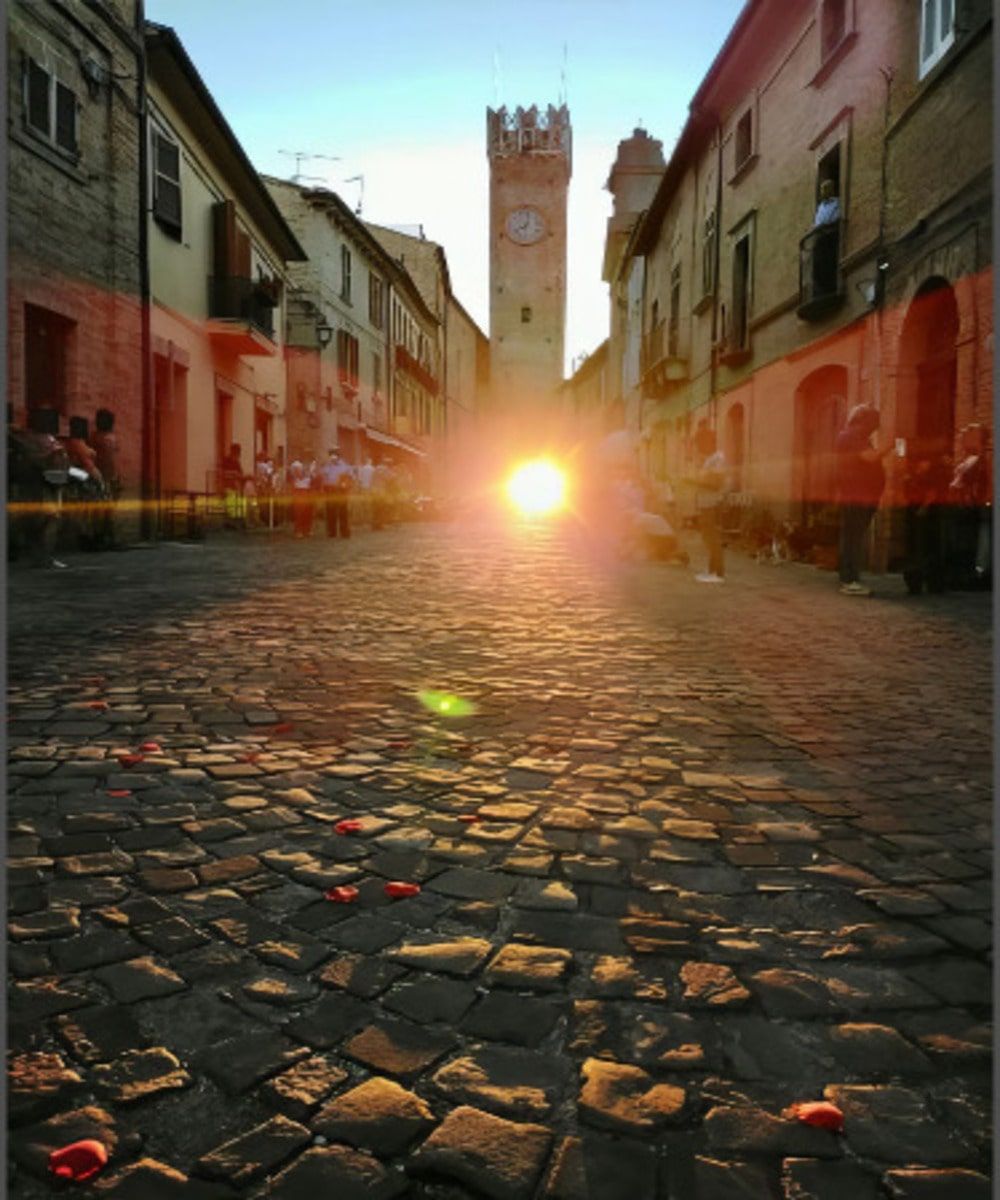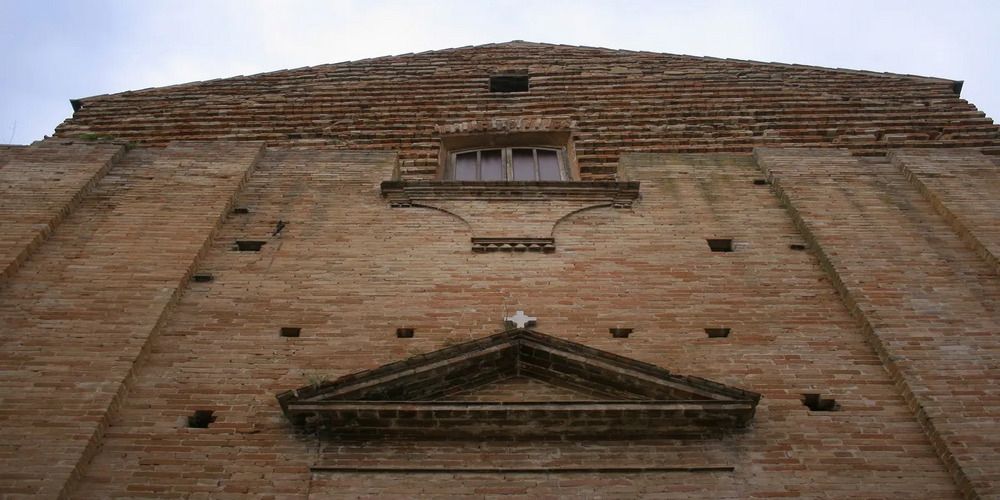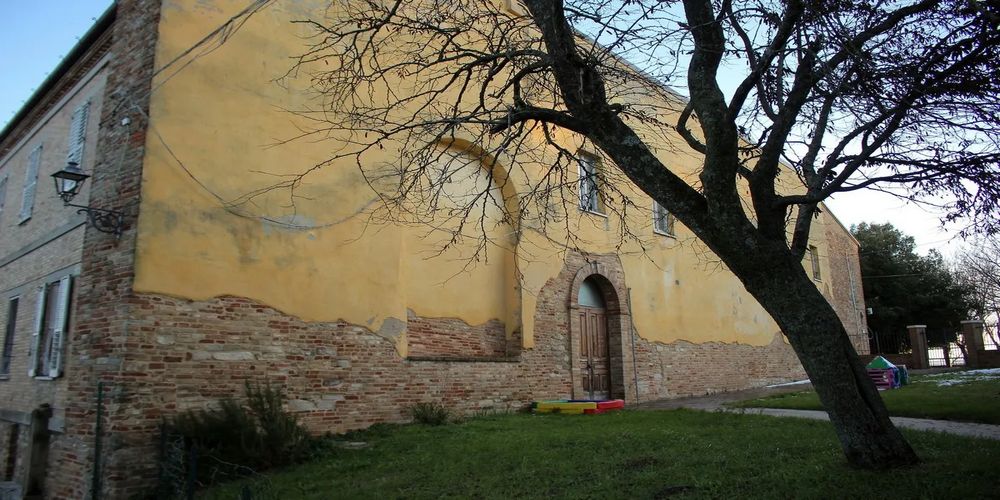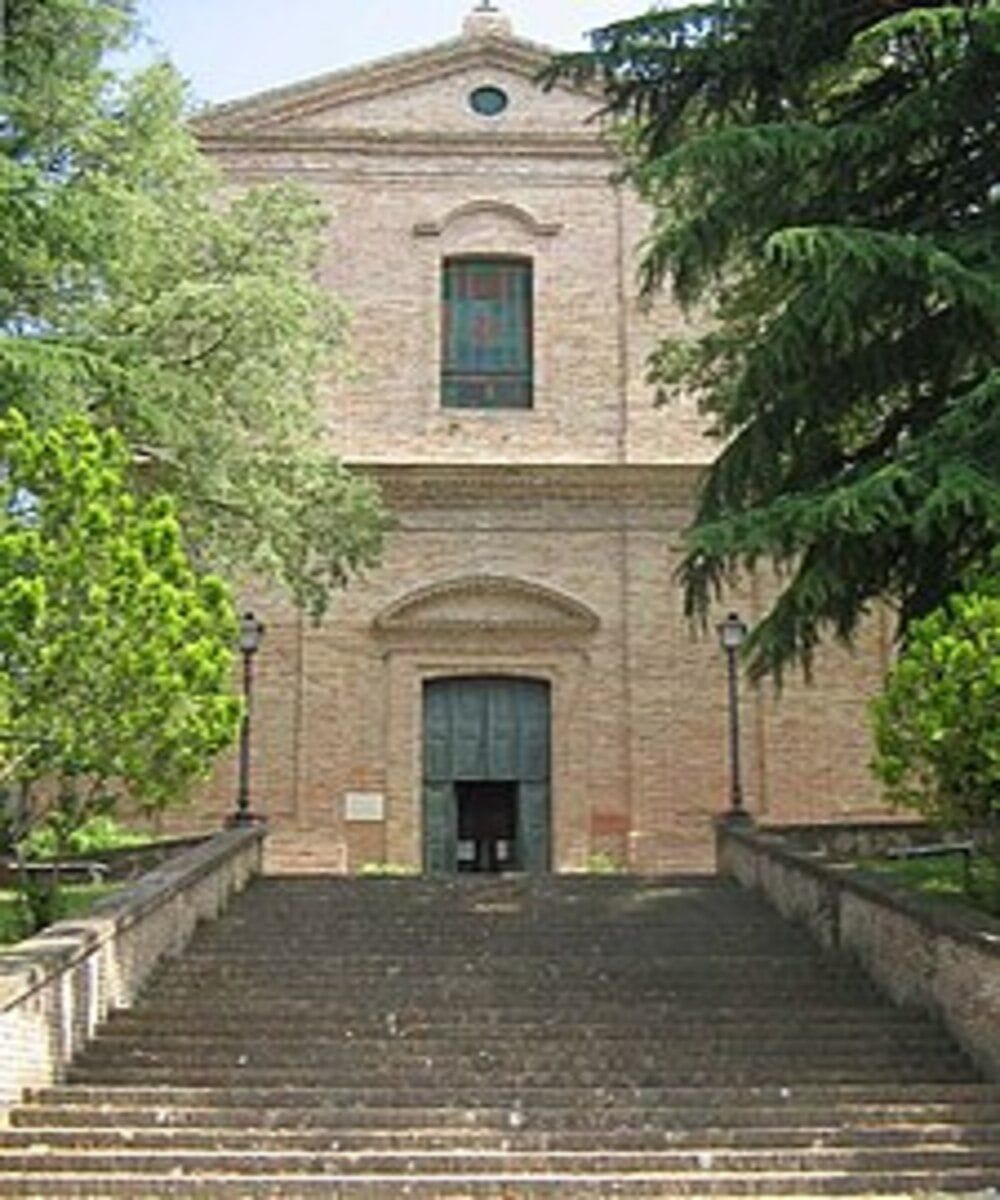The Matenano hill is a gentle, welcoming rise that emerges from the green Fermo countryside. A throne of tufa, surrounded by lush trees and included in the valleys of the Aso, Tenna and Ete Vivo rivers, it offers a privileged view of the Sibillini Mountains.
In this enchanting and peaceful setting right on the top of the hill, stands Santa Vittoria in Matenano, a small and charming village (it has about 1,200 inhabitants) composed of cobbled alleys and a long series of buildings that date back to the High and Low Middle Ages, but also to the 16th and 18th centuries. Today we are going together to discover what to see in the historic center of Santa Vittoria in Matenano as we travel through this little gem of the Fermo area.

What to see in Santa Vittoria in Matenano in the historic center: the itinerary

Before discovering what to see in Santa Vittoria in Matenano, let us trace an excursus on its history.
The first nucleus of the town is due to a group of Benedictine monks from the abbey of Farfa, in present-day Fara Sabina, in the province of Rieti. They arrived there together with Abbot Peter I to escape the attacks of the Saracens, who were focused in central Italy to besiege Rome. It was the year 898 and a group of Benedictines, the only ones among those fleeing to survive, settled in the then monastery of Ss. Ippolito and Giovanni in Silva. Here, with the leadership of Abbot Ratfredo, they built a fortress, a castle and a new monastery with church, taking advantage of a convenient location for sightings and protection from possible invaders, but also to meet the need for silence and tranquility that the monastic order needed; the Matenano hill, already home to hermits in previous decades, was pefect.
In 924, also from the monastery of Farfa, came the relics of Saint Victoria, the order's patron martyr to whom the name of the village that grew up around was dedicated. This was a further impetus to literally give life to these natural surroundings: the Farfans undertook to care for it with advanced agricultural techniques, to build on and to pass on their knowledge of crafts and manual labor. In the 13th century, Santa Vittoria in Matenano was designated the seat of the Presidiato Farfense in the Marche region, holding jurisdiction over the present-day provinces of Fermo, Ascoli Piceno and Macerata.
We can now admire several traces of the splendor bequeathed to us by the Farfenses in the structures of the ancient village and in the territories outside it, especially in the Ponte Maglio area.
Starting from the entrance, through the portal of the Tower of Odorisio, we come across the original medieval pattern, narrow streets and red-stone buildings, and we get to the sight of churches that date back to the time of the monkish presence but also to later periods of the Middle Ages, up to the sumptuous 16th- and 18th-century palaces of noble families, who also succeeded each other in the village.
Therefore, let's discover together what to see in the historic center of Santa Vittoria in Matenano in an itinerary divided into stages.
First stop: the Tower of Odorisio

Let's begin our path from the Tower of Odorisio, ideally the gateway to Santa Vittoria in Matenano. Located in the western part of the historic center, it provides access to Corso Matteotti, the main street and extension of the plain at the foothills of the Matenano.
It was built at the behest of the man to whom it was dedicated, the Abbot Odorisio, during his term as Podestà of the municipality, between 1235 and 1238. From this 27-meter-high tower branched the ancient walls, portions of which remain today; on the top is a clock and bells that mark the rhythms of the town. The gateway, where in ancient times a door was fixed, is a pointed arch through which, on certain days in August, a splendid light effect is created by the sun setting exactly in the opening; this phenomenon is celebrated during the Festival of the Sun, the event of the year for the citizens.
Second stop: the noble families' palaces

Continuing along the streets of the historic center of Santa Vittoria in Matenano, between Corso Matteotti, Via Lamponi and Via Roma, you will come across a series of elegant palaces. They were erected between the 16th and 18th centuries by important Marche families, the Sepe, Monti, Lampone, Della Torre, Castrignano, and Macilenti, who lived in the village for some periods. Superbly preserved epigraphs and coats of arms of the families are still visible on the fine portals of the palaces.
Third stop: the Town Hall and the Church of Sant'Agostino

Let us go on to Corso Matteotti, where the complex of Sant'Agostino is located, in which the spiritual and political dimensions are united.
Built in the 15th century as part of the ancient Farfa monastery, it was damaged and collapsed numerous times over the centuries by earthquakes. It was then rebuilt in its current neoclassical style through various interventions in the late 18th and early 19th centuries, but inside you can still walk through the original 15th-century style cloister. The monks stayed there until the Unification of Italy, and in 1866 it was acquired by the municipal administration to make it the seat of the Town Hall, which is still here today. The most interesting attraction of the ecclesiastical section is in the apse, where there is a niche inside which is a faithful reproduction of the Lourdes Grotto. In the municipal section, on the other hand, important ancient documents are preserved.
Fourth stop: the former convent of San Francesco

Continuing toward Via XX Settembre, at the intersection with Via Farfense, we find the former Convent of San Francesco, which today is partly used as a school. In ancient times it also included a church dedicated, indeed, to San Francesco of Assisi, who is said in 1215 to have been a guest of the Farfense monks present in the town.
Instead, the monastery survived until the Unification of Italy and later it was handed over to local administrations, while the church was pulled down for safety reasons, so its current appearance presents a combination of styles from various eras. In the garden outside, however, a large walled arch has remained, which served to unite the church with the monastery.
Behind it we find the park of the same name, where we sit for a relaxing break, listening to the sounds of the surrounding nature.
Fifth stop: the Sanctuary of Santa Vittoria

What to see in the historic center of Santa Vittoria in Matenano if not the shrine of the patron saint? Continuing into the old town, on Via Farfense, we find in fact the building dedicated to the martyr, also called La Collegiata.
It was built at the end of the 18th century and is still excellently preserved, both in its exterior structure, in neoclassical style, and in its interior, rich in many works and goldsmith art objects, such as a splendid stationary cross in silver foil and another in gilded copper. In the Collegiate Church is the travertine stone sarcophagus where the authentic relics of Saint Victoria are kept, whose martyrdom is skillfully carved on the lid.
Behind it is the Park of the Rimembranze, the largest green area in the historic center, and we stop here, as well, to contemplate the beauty of nature.
Sixth stop: Monastery of Santa Caterina

Going up along Via Roma, we complete the historic center buildings tour with the Monastery of Santa Caterina. Realized around the 14th-15th centuries, it housed a Benedictine female institute subordinate to the Abbey of Farfa, and it seems that young nuns received the “Robe of Santa Vittoria” in the presence of the martyr's sarcophagus from the very hands of the convent prior. Renovated several times over the centuries, it still houses a group of Benedictine nuns, but also welcomes the devouts for spiritual retreats and training courses.
The nuns also focus on the growing of vegetable gardens, embroidery and the production of preserves and delicious food products - and who knows, maybe it will be possible to taste them.
Inside the building there is the striking, partly ruined painting of the Madonna del Latte, or the Virgin Mary intent on breastfeeding the baby Jesus.
Seventh stop: the Balcony of the Sibillini

The last stop on our walk can only be the belvedere of Santa Vittoria in Matenano, friendly referred to as the Balcony of the Sibillini Mountains. It is in fact a privileged overlook, by the entrance to the village, of the Sibillini mountains, which can be clearly seen in the distance among the green foliage. Here we enjoy a dreamy sunset, accompanied by the sound of the branches, and relish a priceless romantic and contemplative atmosphere.
What to see in Santa Vittoria in Matenano: surviving treasures

Santa Vittoria in Matenano hides many other treasures in its historic center, but unfortunately, like many other towns in the rest of Marche, Umbria, and Latium regions, it was a victim of the 2016 earthquake. The event knocked out (if not even wiped out), many small towns in the central part of Italy and caused incalculable damage to many ancient villages. In the town, therefore, many churches and buildings are currently uninhabitable due to safety issues.
Nevertheless, you now know what to see in the historic center of Santa Vittoria in Matenano when you want to visit it and you will know exactly how to get around for an immersion in history that you will rarely experience elsewhere.

Progetto "Visit Santa Vittoria in Matenano" per la valorizzazione del territorio e delle eccellenze locali, CUP F96G24000240002, finanziato per 36.890,00 € da FESR 2021-2027, ASSE 1, azione 1.2.2 intervento 1.2.2.2 Servizi digitali integrati
About the author
Written on 05/12/2024



Denise Penna
Tiny and enchanting hill town, overflowing with priceless treasures: what to see in the historic center of Santa Vittoria in Matenano